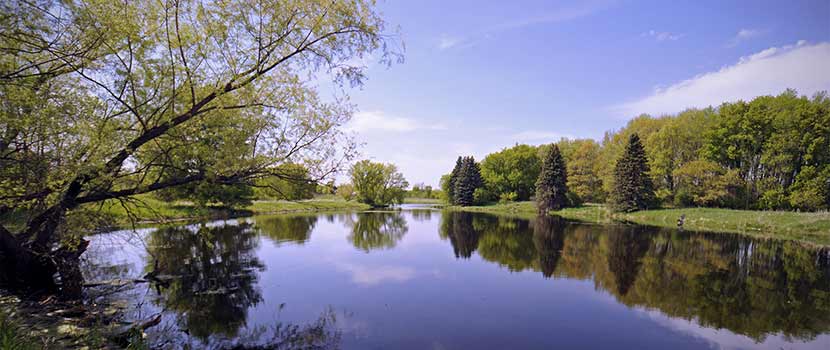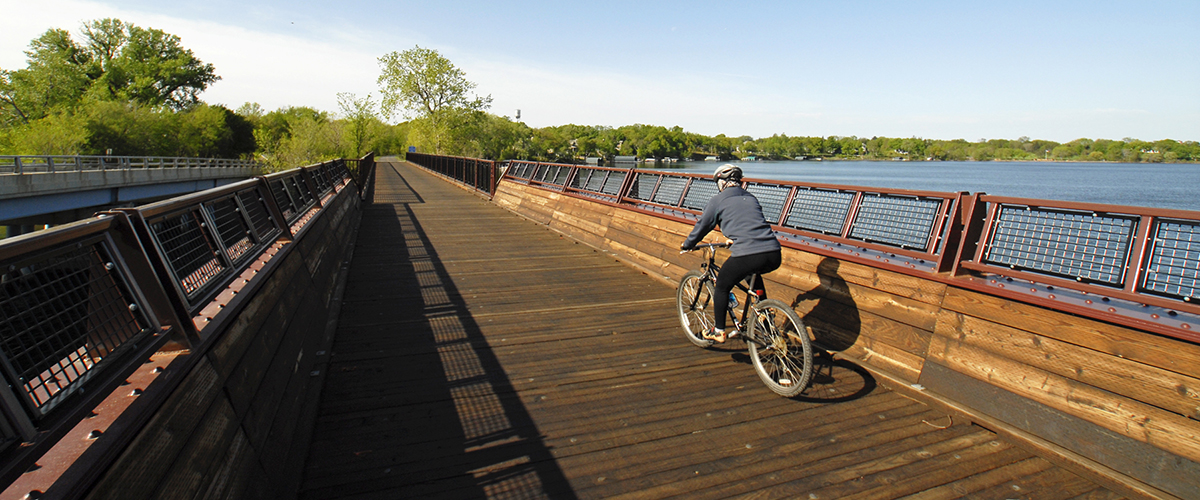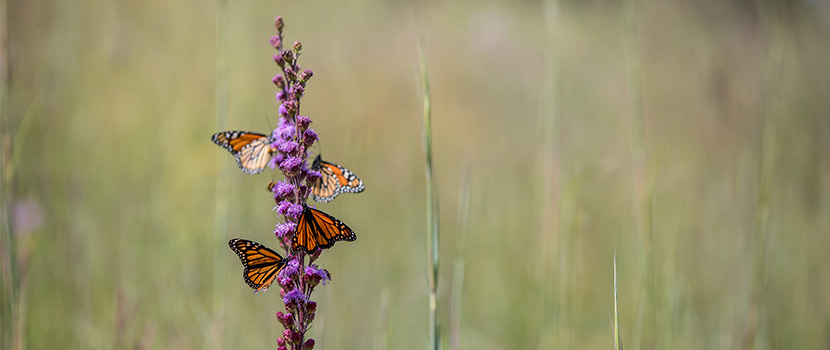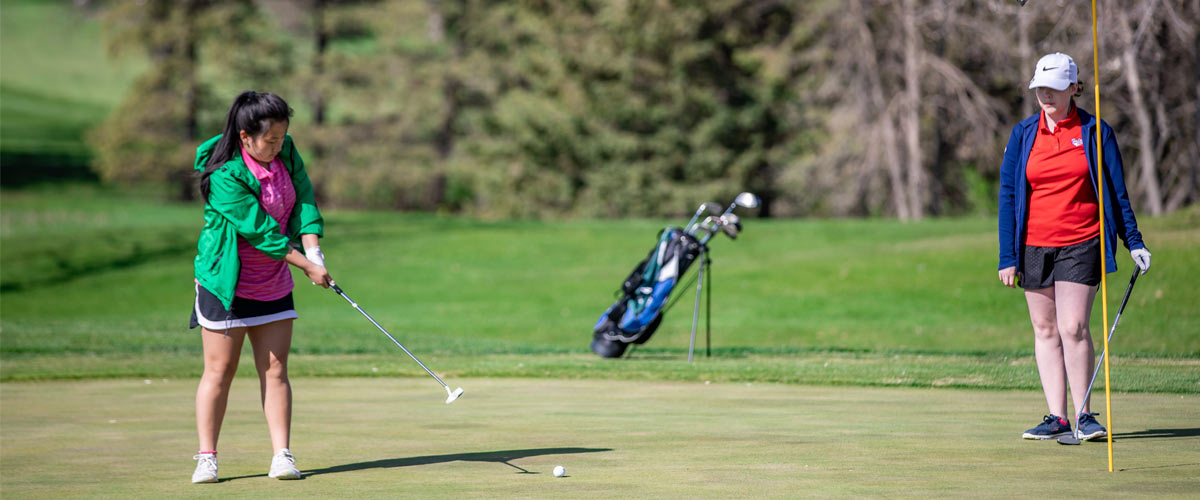
When you think of golf, what comes to mind? Maybe valuable time spent with friends or the invigorating feeling that comes with being outdoors on a nice day. You likely don’t think of sustainability. In fact, you may even think of the opposite.
Three Rivers Park District is a natural resources-based park system with a mission of promoting environmental stewardship through education and recreation. We operate four golf courses in the Twin Cities: Baker National Golf Course, Eagle Lake Golf Course, Glen Lake Youth Golf and Practice Center, and Cleary Lake Golf Course and have found a way for golf and environmental stewardship to work together.
Here are six ways we put sustainability first on the course:
1. Using Less Ground Water
At Three Rivers, sustainable golf starts with finding innovative solutions to relying on ground water. Our courses draw some water for irrigation from ponds that are filled by rainwater and runoff water from nearby parking lots. In rainy years, like this year, it means less reliance on well water.
At Baker National and Eagle Lake, plans are in place to install a system that will collect even more water from hard-surface areas like the parking lot to use for watering the course. At Eagle Lake, we have also partnered with a neighboring business to collect water from their hard surfaces, too.
If all goes as planned, this collection system will eliminate the need to use any ground water at Eagle Lake by 2022 and dramatically reduce reliance on it at Baker National.
2. Providing Habitat for Wildlife
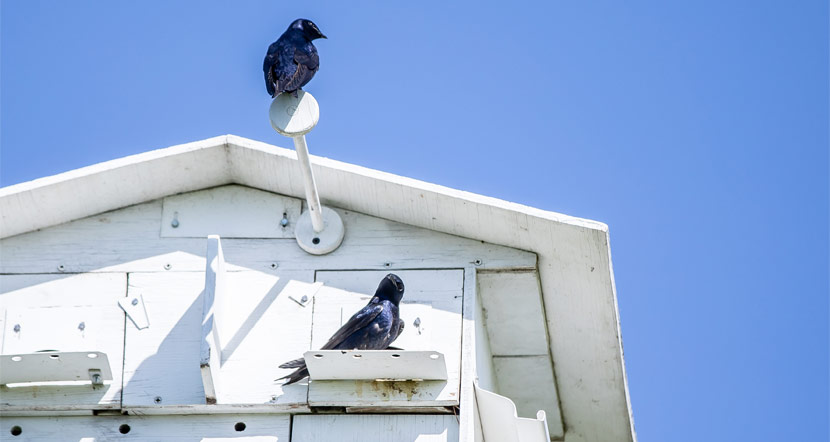
Protecting wildlife is a key part of Three Rivers’ mission – and that includes at our golf courses. Baker National Golf Course is a recognized Audubon Cooperative Sanctuary – a certification it has held since 1995. It was actually the first public course in Minnesota to receive this designation.
To be recognized as an Audubon Cooperative Sanctuary, the course had to be assessed for six environmental categories: wildlife and habitat management, water quality management, water conservation, outreach and education, chemical use reduction, and safety and environmental planning. Every three years, Audubon International reassesses the course to determine if it can keep its certification.
If you’ve been to Baker National, you may know that it has a booming population of purple martins that you can watch swoop and dive for bugs to eat. You may also see volunteers tracking wood duck and bluebird populations, and if you’re lucky, you might even spot some sandhill cranes out for a stroll on the green.
3. Limiting pesticide use through GPS-controlled spraying
Spraying pesticides is often part of keeping turf in good shape. However, we also know the negative effects of overusing them.
Three Rivers uses GPS-controlled spraying to minimize pesticide use. GPS spraying keeps track of exactly which areas of the course were sprayed and when. It means maintenance crews don’t need to spray the whole course every time, and it eliminates accidentally spraying the same area twice – something that is easy to do without GPS technology.
GPS spraying also allows for more precise application, avoiding off-target areas like ponds, sand traps and environmentally sensitive areas that shouldn’t be sprayed.
While we rarely use insecticides on our courses, when we do, we think carefully about our environmental impact. In order to protect pollinators, we only spray in the evening after the pollinators have become inactive. After spraying, we water the area to keep the insecticides from being kicked up into the air. By the time pollinators are active again in the morning, everything has soaked into the ground. Pollinators have virtually no contact with the insecticides.
4. Participating in the Turfgrass Water Conservation Alliance
Being mindful of the types of turf grass we use is another way Three Rivers puts sustainability first. Baker National, Eagle Lake and Glen Lake are all part of the Turfgrass Water Conservation Alliance (TWCA). TWCA is focused on identifying turfgrass varieties that are proven to withstand drought conditions better than others. Seeding courses with these species helps reduce the amount of water needed to maintain a healthy, green course.
5. Consulting with Natural Resources Experts
Unlike most golf courses in the country, Three Rivers' courses have an in-house natural resources department to consult about environmental concerns. There’s no thinking twice about calling an expert or double-checking that practices are sound because we’re all on the same team.
Our water quality specialists regularly monitor run-off water from all four courses to ensure quality is up to par. (It is.) Our forestry and wildlife departments also play an important role in landscaping the courses, choosing native plants that benefit the environment and local wildlife. They are also available to help with potential concerns like emerald ash borer.
6. Creating a Community Connected to Nature
Golf fosters strong communities and a connection to the outdoors that is at the core of Three Rivers’ mission. Three Rivers’ courses are meeting places for leagues, teams, social groups and more. They are spaces where kids can learn values like sportsmanship, integrity and leadership through First Tee Minnesota and LPGA-USGA Girls Golf programs.
On the course, sport and nature coexist. You can swing a club and admire a passing butterfly. You can sink a putt and look up to see rare birds strutting across the green. You can get your steps in and take breaks to stop and smell the native flowers. You can connect with your community and your environment.
About the Author

Erin Korsmo is the Web Coordinator at Three Rivers Park District. Her background is in journalism and content strategy. Erin has a longstanding passion for the outdoors. As a child, she went camping every summer and volunteered to count loons for the DNR with her family. Erin is a Minnesota Master Naturalist in the deciduous forest and prairie biomes. Outside of work, she enjoys hiking, kayaking, identifying and photographing plants and wildlife, crafting, and spending time with her husband and cat.
Related Blog Posts
What Is Environmental Stewardship to You?
By: Laura Jarriel Andrea Breitung
Learn what the Three Rivers blog is about and start to ask yourself what environmental stewardship means to you.
Sustainability Challenge: World Car Free Day
By: Andrea Breitung
World Car Free Day, held September 22, is an annual day with the goal of encouraging a world less reliant on cars. Read on for ideas to ditch your vehicle and challenge yourself to see if you can go car-free for one day.
Nature’s Classroom for 50 Years: Early Citizen Science and Monarch Research
By: Laurel Sundberg
Little was known about the winter whereabouts of the monarch butterfly until the mid-1970s. Subtle factors, persistence and a network of people working across borders came together to finally reveal the mystery of the great monarch migration. Read on to learn how Minnesota occupies an important place in the history of monarch research.

